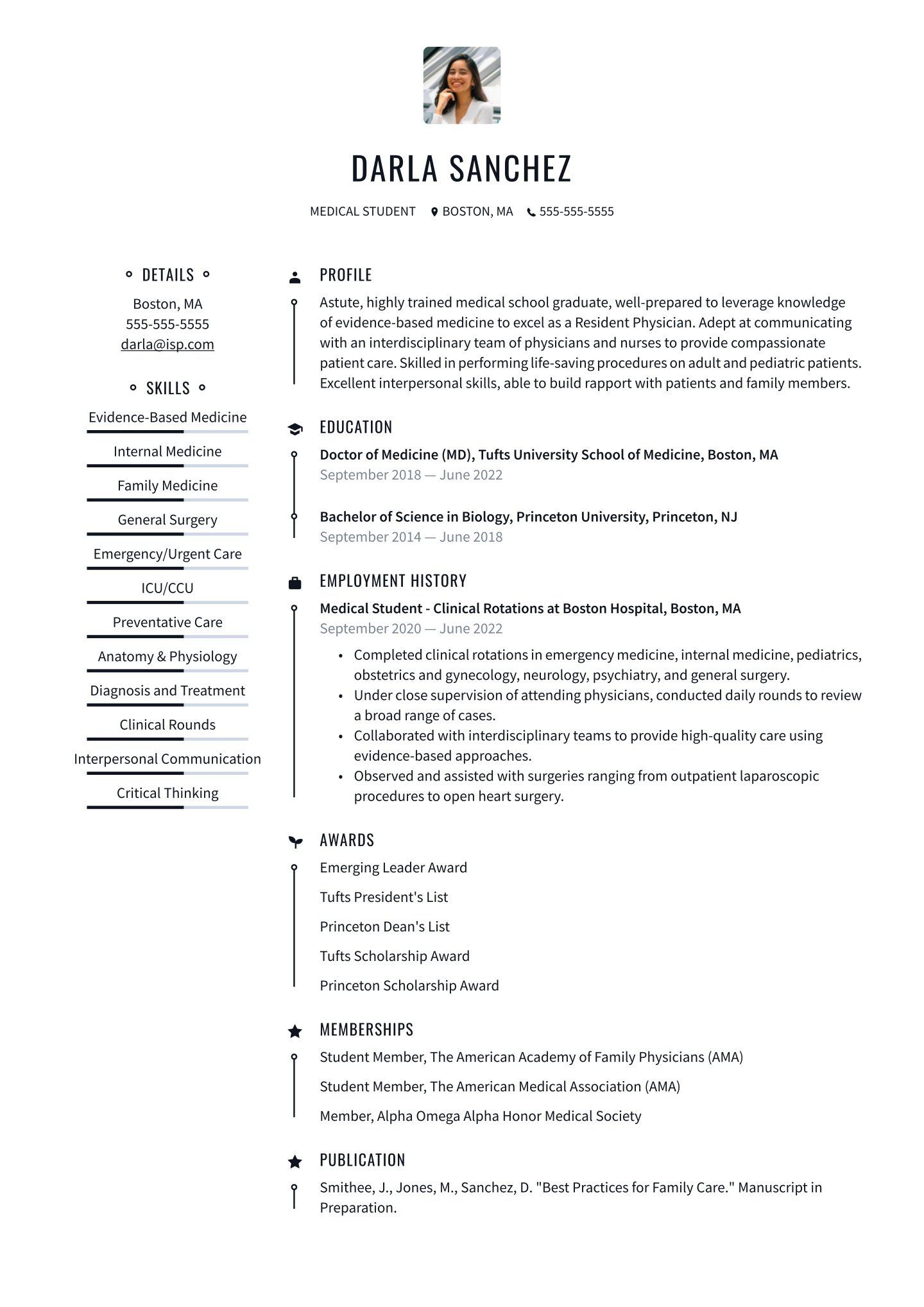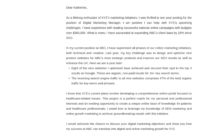Embarking on a medical career is an exciting journey, but it’s also one that demands careful preparation and strategic presentation. As a medical student, you’re constantly learning, gaining invaluable experiences, and developing skills that will shape your future practice. All these accomplishments, no matter how big or small, need to be showcased effectively, and that’s where a strong Curriculum Vitae, or CV, becomes your most powerful ally.
Unlike a standard resume, a medical CV is a comprehensive document that meticulously chronicles your entire academic and professional journey. It’s your personal narrative, designed to impress admissions committees for residencies, secure research opportunities, land internships, or even gain competitive scholarships. Navigating the nuances of what to include and how to format it can feel overwhelming, but utilizing a well-structured cv for medical students template can significantly streamline this crucial process, ensuring you highlight all your strengths without missing a beat.
Crafting a Standout Medical Student CV: Key Sections to Include
Building a compelling CV for medical opportunities requires more than just listing your past activities; it demands a strategic presentation of your skills, experiences, and aspirations. Think of your CV as a window into your professional self, meticulously organized to reflect your dedication and potential in the demanding field of medicine. Each section serves a distinct purpose, contributing to the overall narrative of your journey.
You’ll want to start with the essentials, making it easy for reviewers to identify you and understand your foundational academic background. Your contact information should be clear and prominent, followed by a detailed overview of your educational history. This section is where you list your medical school, any undergraduate degrees, relevant coursework, and academic honors. It’s crucial to include dates of attendance and expected graduation.
Contact Information
Ensure your name, phone number, professional email address, and LinkedIn profile (if applicable) are accurate and easily found at the top of your CV. This is your professional identity on paper.

Education
List your degrees in reverse chronological order, starting with your most recent or in-progress medical degree. Include the institution name, location, degree type, major, minor, graduation date (or anticipated date), and any significant honors or distinctions, like Dean’s List or scholarships.
Beyond your academic foundation, your practical experiences are paramount in a medical CV. This includes any clinical rotations you’ve completed and research projects you’ve been involved in. These sections demonstrate your hands-on learning and your commitment to advancing medical knowledge and patient care. Describe your roles, responsibilities, and the specific skills you developed or contributed to.
Clinical Experience
Detail your clerkships, rotations, externships, and shadowing experiences. For each, specify the institution, department, dates, and a brief description of your responsibilities, patient interactions, and the skills you gained (e.g., patient history taking, physical exams, assisting in procedures).
Research Experience
If you’ve participated in research, this section is vital. Include the project title, principal investigator, institution, dates, your specific role, methodologies used, and any results or findings. Mention if the research was presented or published.
Finally, your CV should also highlight your broader engagement and skills that contribute to your holistic development as a future physician. This includes volunteer work, leadership roles, and any presentations or publications you’ve contributed to. These elements showcase your commitment to service, teamwork, and the dissemination of knowledge within the medical community.
Volunteer Work and Leadership
Highlight any activities where you’ve demonstrated leadership, teamwork, or a commitment to community service. This could include student organizations, medical brigades, or health-related outreach programs.
Publications and Presentations
If you have any publications (peer-reviewed articles, abstracts) or have presented at conferences (posters, oral presentations), list them here. Use proper citation format and specify your role if it was a collaborative effort.
Consider also adding a dedicated section for any awards, honors, or scholarships you’ve received, as well as any professional affiliations or societies you are a part of. Don’t forget to include relevant skills such as language proficiencies, technical skills (e.g., electronic health records software, statistical analysis programs), or certifications like Basic Life Support (BLS) or Advanced Cardiovascular Life Support (ACLS).
- Awards and Honors
- Professional Affiliations
- Language Skills
- Technical Skills and Certifications
Tips for Polishing Your Medical Student CV for Maximum Impact
Once you’ve diligently compiled all the necessary sections, the next crucial step is to refine and polish your CV to ensure it truly stands out. A well-presented CV isn’t just about what you say, but how you say it. Attention to detail in formatting, language, and tailoring can make all the difference in catching the eye of busy reviewers and securing the opportunities you desire.
One of the most important aspects is to tailor your CV to each specific application. While the core information remains consistent, you should always adjust the emphasis and wording to align with the requirements and priorities of the program, research opportunity, or scholarship you’re applying for. Read the job description or program overview carefully and highlight the experiences and skills most relevant to that particular role. This shows that you’ve done your homework and are genuinely interested.
When describing your experiences, don’t just list responsibilities; articulate your accomplishments. Use strong action verbs (e.g., “managed,” “developed,” “collaborated,” “initiated”) and quantify your achievements whenever possible. Instead of “Assisted in patient care,” try “Assisted in the care of 15+ patients daily, optimizing patient flow and communication between multidisciplinary teams.” This provides concrete evidence of your impact and capabilities.
Proofreading is absolutely non-negotiable. A single typo or grammatical error can undermine your professionalism and attention to detail. After you’ve spent hours working on your cv for medical students template, it’s easy to overlook mistakes. Have at least two other people review your CV for errors, clarity, and overall impact. A fresh pair of eyes can spot issues you might have missed, ensuring your document is flawless.
Finally, pay close attention to formatting and length. For medical students, a CV is typically 1-2 pages long, though it can extend if you have significant research or publication history. Use a clean, professional font and consistent formatting throughout. Ensure ample white space to make it easy to read, and always save your CV as a PDF unless otherwise specified. This preserves your formatting and ensures it looks the same on any device.
- Keep it concise and relevant, typically 1-2 pages for students.
- Use clear, professional, and consistent formatting.
- Proofread meticulously and get feedback from others.
- Save your CV as a PDF to maintain its appearance.
- Tailor the content to each specific application.
Your Curriculum Vitae is far more than a simple document; it’s a dynamic tool that evolves with your career, showcasing your dedication, growth, and unique contributions to the medical field. Investing time and effort into crafting a polished and comprehensive CV can significantly enhance your chances of securing competitive positions, whether it’s for residency programs, research fellowships, or other advanced training opportunities. It’s your professional story, told in a way that resonates with those who hold the keys to your future.
By thoughtfully organizing your experiences, articulating your achievements, and meticulously refining every detail, you create a powerful representation of your potential. Embrace the process of building and updating this essential document, as it truly serves as the cornerstone for unlocking countless opportunities and paving the way for a successful and impactful career in medicine.
